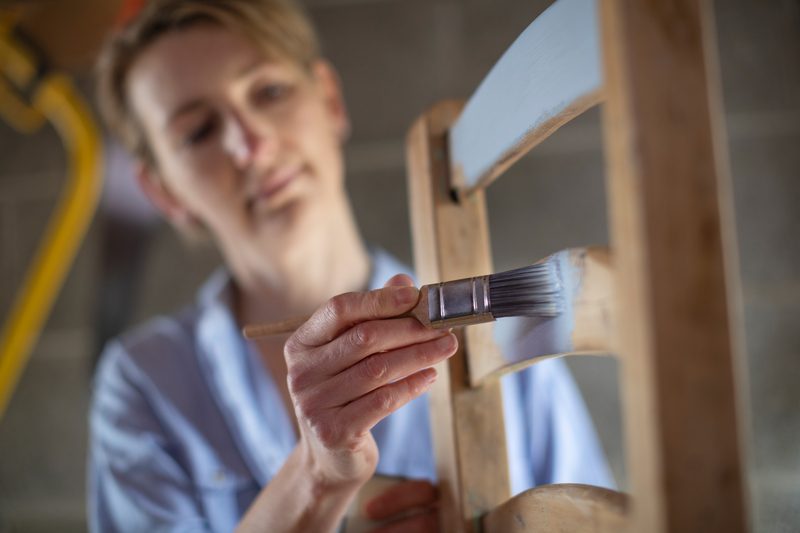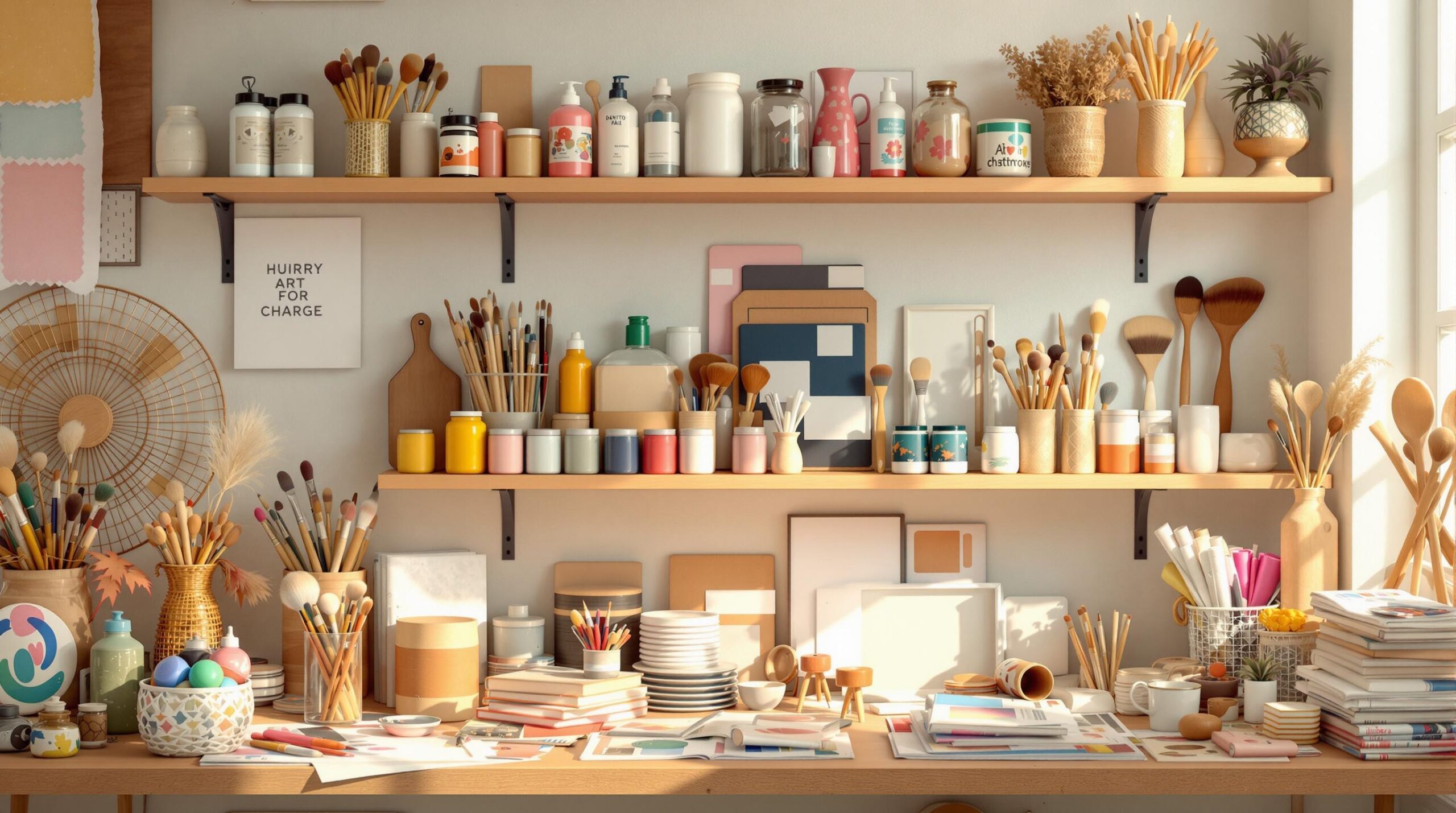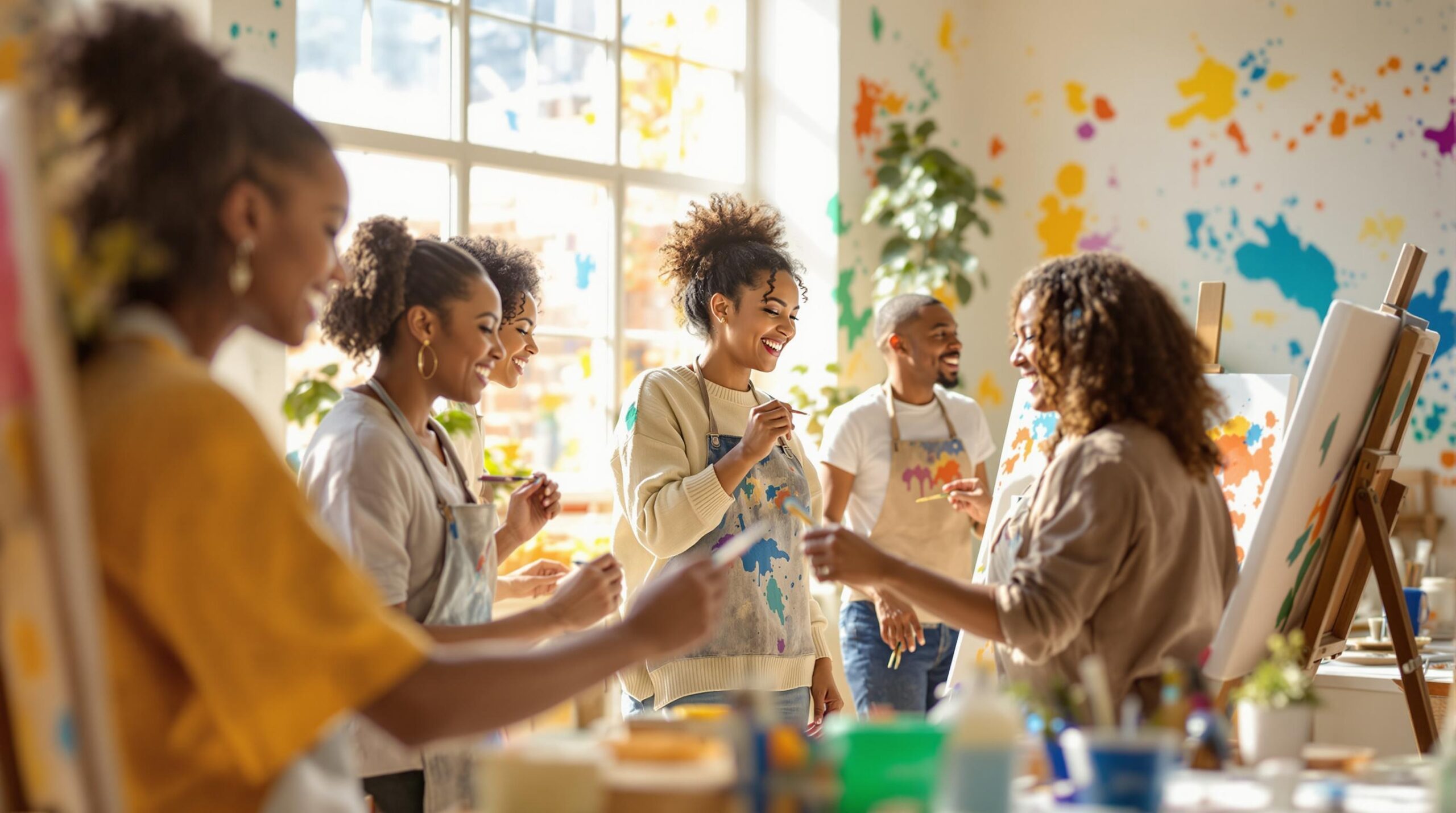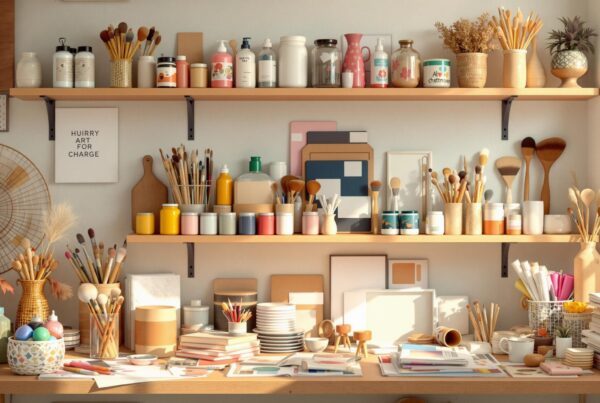Are you looking for a fun and rewarding way to spend your free time? Do you find yourself scrolling endlessly through social media or binge-watching TV shows, feeling like there must be something more fulfilling out there? Well, you’re in luck! Craft hobbies might just be the answer you’re searching for.
In this digital age, where screens dominate our lives, there’s something incredibly satisfying about creating something tangible with your own two hands. That’s where craft hobbies come in. They offer a perfect blend of creativity, skill-building, and pure enjoyment that can transform your leisure time from passive consumption to active creation. Engaging in a creative hobby, such as writing poetry, glass blowing, or gardening, not only provides a creative outlet but also fosters personal growth and connection with others.
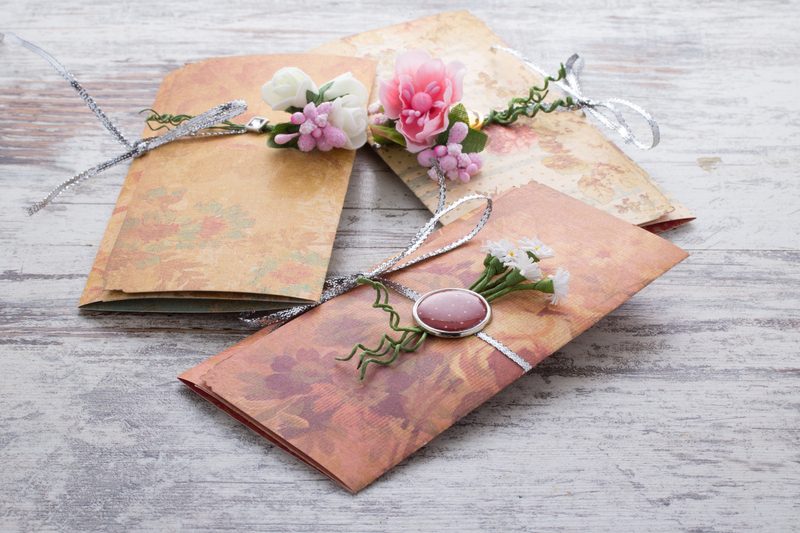
What’s All the Fuss About Craft Hobbies?
Craft hobbies have taken the world by storm, and for good reason. But this isn’t just some passing trend or fad. Crafting has been a part of human culture for thousands of years, and its recent resurgence speaks to our deep-seated need to create and express ourselves.
These classic hobbies aren’t just about making pretty things to decorate your home (although that’s certainly a nice perk!). They’re about so much more. Craft hobbies are a gateway to expressing yourself, learning new skills, challenging your brain, and having an absolute blast while you’re at it.
But what exactly are craft hobbies, and why should you care? Let’s dive in and explore this colourful, creative world!
The Wonderful World of Craft Hobbies
Crafty hobbies are all about making things with your hands. It’s like being a kid again, playing with Play-Doh or building with Legos, but with better tools and much more impressive results.
Are you a nature lover? Try pressed flower art or creating terrariums. More of a tech geek? 3D printing and electronic crafts might be right up your alley. Love fashion? Why not try designing and sewing your own clothes or accessories?
The possibilities are endless, and the best part is, you don’t need to be an expert to start. Many crafts are beginner-friendly and can be picked up with just a few basic supplies and some online tutorials. As your skills grow, so can the complexity of your projects, giving you a constant source of challenge and achievement.
Why Craft Hobbies Are More Than Just a Pastime
Now, you might be thinking, “This sounds fun, but I already have hobbies. Why should I make time for crafting?” Well, craft hobbies aren’t just about keeping your hands busy or filling up your free time. They’re a ticket to a whole new world of creativity, relaxation, and personal growth.
In our fast-paced, high-stress world, craft hobbies offer a much-needed respite. They provide a chance to slow down, focus on the present moment, and create something beautiful or useful (or both!). But the benefits go far beyond just relaxation. Learning a new skill through crafting can be incredibly rewarding and enriching, offering fulfillment and personal growth.
Let’s dive into some of the reasons why craft hobbies are worth your time and how they can enrich your life in ways you might not expect.
Stress-Busting Powers
When you’re focused on creating something, whether it’s a painting, a piece of pottery, or a knitted hat, all that daily stress tends to melt away. Your mind becomes absorbed in the task at hand, giving you a break from worrying about your to-do list or that upcoming deadline. Flower arranging, for example, is a peaceful and creative hobby that involves making artistic bouquets using flowers and greenery.
It’s like meditation, but with more glue and glitter. And at the end, instead of just feeling relaxed, you have a tangible creation to show for your efforts. How’s that for productive relaxation?
Boost Your Brainpower
Craft hobbies aren’t just fun – they’re a serious workout for your noggin.
Exploring a new hobby, learning new techniques, solving crafty problems, and focusing on detailed work all help to keep your mind sharp and agile. It’s like going to the gym, but for your brain.
Studies have shown that engaging in creative activities can help improve cognitive function, enhance memory, and even potentially reduce the risk of cognitive decline as we age. Who knew that making a pom-pom could be so good for your brain?
Express Yourself
In a world where we often feel pressured to conform, craft hobbies offer a wonderful outlet for self-expression.
Whether you’re into bold, bright colours or subtle, sophisticated designs, your creations are a reflection of you. It’s a chance to let your personality shine through in a tangible way.
Crafting allows you to tell your story, share your perspective, and make your mark on the world – quite literally! It’s like wearing your heart on your sleeve, but with more sequins (if that’s your thing, of course!).
Jewellery making is a perfect example of a hobby that allows for personal expression, offering various styles and techniques such as beading, hand engraving, and silversmithing.
Popular Craft Hobbies to Try (Including Jewellery Making)
Ready to jump into the world of craft hobbies?
Here are some popular options to get you started:
Knitting and Crochet
Needles, yarn, and endless possibilities.
Knitting and crochet are classic craft hobbies that never go out of style. To start crocheting, minimal equipment is needed, specifically a crochet hook and yarn.
From cosy jumpers to cute amigurumi toys, the sky’s the limit.
Painting and Drawing
Channel your inner Picasso with painting and drawing.
You don’t need to be a pro to enjoy splashing some colour on canvas.
Who knows? You might discover a hidden talent!
Woodworking
For those who love the smell of sawdust in the morning.
Woodworking lets you create everything from simple birdhouses to fancy furniture.
Just watch those fingers!
Cross Stitch
Turn your memories into works of art with scrapbooking.
It’s like social media, but you can touch it and it smells nice.
Plus, it’s a great excuse to buy pretty stickers. Local craft stores are excellent sources for scrapbooking supplies and often offer classes and workshops for those interested in learning new techniques.
Needle Felting
Get your hands dirty with pottery.
There’s something magical about turning a lump of clay into a beautiful bowl or mug.
Just don’t get too carried away with that “Ghost” scene.
Needlework and Textile Crafts
Cross Stitch and Embroidery
Cross stitch and embroidery are timeless needlework and textile crafts that have captivated creative minds for centuries. These crafts involve using a needle and thread to create intricate designs on fabric, offering a delightful blend of precision and artistry.
Cross Stitch: This form of embroidery uses x-shaped stitches to form patterns and images on fabric. It’s a fantastic hobby for those who love detailed work and the satisfaction of seeing a picture come to life stitch by stitch. Whether you’re creating a charming wall hanging or a personalized gift, cross stitch projects can be as simple or complex as you like. With a huge range of patterns available online, you can easily find something that sparks your interest.
Embroidery: While cross stitch is a specific type of embroidery, the broader craft encompasses various stitching techniques. From satin stitches to French knots, embroidery allows you to add beautiful embellishments to clothing, accessories, and home décor. It’s a wonderful way to express your creativity and make everyday items uniquely yours. Plus, with countless tutorials and communities online, you can quickly learn the basic stitches and start your embroidery journey.
Sewing and Dressmaking
If you love working with fabric and have a flair for fashion, sewing and dressmaking might be the perfect creative hobbies for you. These crafts involve using a sewing machine to create everything from stylish clothing to practical home décor.
Sewing: This versatile craft lets you bring your fabric fantasies to life. Whether you’re making a cosy quilt, a set of curtains, or a custom tote bag, sewing offers endless possibilities. With a sewing machine, you can tackle projects that range from simple repairs to intricate designs.
Dressmaking: For those who dream of designing their own wardrobe, dressmaking is a thrilling adventure. This craft involves creating wearable items, from elegant dresses to tailored suits. It requires a good understanding of pattern making, fabric selection, and construction techniques. But don’t worry – with practice and patience, you’ll soon be crafting garments that fit perfectly and reflect your unique style.
Quilting and Patchwork
Quilting and patchwork are beloved needlework and textile crafts that combine creativity with practicality. These crafts involve sewing together layers of fabric to create beautiful, warm, and often heirloom-quality items.
Quilting: This craft involves stitching together a layer of insulating material between two layers of fabric. The result is a cozy quilt that can be used as a blanket, wall hanging, or even a decorative throw. Quilting is a wonderful way to use up fabric scraps and create something both beautiful and functional.
Patchwork: A type of quilting, patchwork involves sewing together small pieces of fabric to create a larger design. This craft is perfect for those who love playing with colours and patterns. Each patchwork project is a unique creation, reflecting your personal style and creativity.
Digital Creativity and Hobbies
Computer Coding and Programming
In the digital age, computer coding and programming have emerged as exciting and rewarding creative hobbies. These crafts involve writing code to create software, apps, and other digital products, offering a unique blend of creativity and technical skill.
Computer Coding: This hobby involves writing code in various programming languages to create digital products. Whether you’re interested in developing games, animations, websites, or mobile apps, coding offers endless possibilities. It’s a fun way to solve problems and bring your ideas to life.
Programming: Taking coding to the next level, programming involves designing and developing software and apps. This craft requires a good understanding of algorithms, data structures, and software design patterns. It’s a fantastic way to challenge your brain and create something truly innovative.
By integrating these new sections, the article will provide a comprehensive guide to a wide range of craft hobbies, encouraging readers to explore their creativity and find joy in making.
Getting Started with Craft Hobbies
So, you’re ready to dive into the world of craft hobbies.
But where do you start? Don’t worry, we’ve got you covered.
Here’s a step-by-step guide to kickstart your crafting journey.
Step 1: Choose Your Craft
With so many craft hobbies out there, picking one can feel overwhelming.
But don’t stress – just follow your heart!
Think about what appeals to you. Do you love colours? Try painting. Enjoy working with your hands? Woodworking might be your thing. Explore various creative hobby ideas to find the perfect craft that matches your interests and encourages you to try different techniques.
Step 2: Gather Your Supplies (Including a Sewing Machine)
Once you’ve chosen your craft, it’s time to gear up.
But don’t go crazy buying everything in the craft store just yet.
Start with the basics and build your collection as you go. For example, candle making requires specific supplies like wax, wicks, and scents, which can often be found in comprehensive craft kits.
Step 3: Learn the Basics
No one becomes a master crafter overnight.
Start with simple projects and techniques.
YouTube tutorials, online courses, and craft books are great resources for beginners.
Step 4: Practice, Practice, Practice
Like any skill, crafting takes practice.
Don’t get discouraged if your first attempts aren’t perfect.
Remember, even Michelangelo probably made some wonky pottery as a beginner.
Step 5: Join a Community
Crafting is more fun when you share it with others.
Look for local craft groups or online communities.
They’re great for tips, inspiration, and making new friends who won’t judge you for your yarn stash.
Craft Hobbies on a Budget
Worried that craft hobbies will break the bank?
Don’t fret! You can get crafty without emptying your wallet.
Here are some tips for crafting on a budget:
Thrift Store Treasures
Thrift stores are a goldmine for craft supplies.
You can find yarn, fabric, and even craft tools at bargain prices.
Plus, it’s eco-friendly. Win-win!
Upcycling Magic
Turn trash into treasure with upcycling.
Old jars become cute vases, and worn-out jeans transform into funky bags.
It’s like being a crafty superhero, saving items from the landfill. Soap making is another great example, where you can use upcycled materials to create personalized and unique soaps.
DIY Tools
You don’t always need fancy tools to get started.
Get creative with what you have at home.
A fork can be a great knitting loom, and a sponge makes an excellent stamp for painting.
Buy in Bulk
If you find a craft you love, consider buying supplies in bulk.
It’s often cheaper in the long run.
Just make sure you have space to store it all!
Overcoming Crafting Challenges
Even the most enthusiastic crafters face challenges sometimes.
But don’t let that stop you from enjoying your craft hobbies.
Here are some common hurdles and how to leap over them:
“I’m Not Creative Enough”
Nonsense! Everyone has creativity in them.
Start by copying projects you like, then add your own twist.
Before you know it, you’ll be coming up with original ideas. Needle felting, for example, is an easy-to-learn craft that allows you to create various soft sculptures using barbed needles to tangle wool fibres.
“I Don’t Have Time”
Craft hobbies don’t need huge time commitments.
Even 15 minutes a day can be enough to make progress.
Try keeping a small project in your bag for spare moments.
“I Keep Making Mistakes”
Mistakes are part of the learning process.
In fact, some of the coolest designs come from “happy accidents”.
Embrace the imperfections – they make your creations unique.
“I’ve Lost Motivation”
It’s normal for enthusiasm to ebb and flow.
If you’re feeling stuck, try a new project or technique.
Or take a break and come back with fresh eyes. Pop culture can also serve as a source of inspiration, with trends often reigniting interest in various crafts.
Turning Your Craft Hobby into a Side Hustle
Got the crafting bug? Why not turn your hobby into a money-maker?
Many crafters have turned their passion into successful side hustles.
Here’s how you can too:
Find Your Niche
What makes your crafts special?
Maybe you use unique materials, or have a particular style.
Finding your niche helps you stand out in the crowded craft market.
Set Up Shop
There are lots of ways to sell your crafts.
Online platforms like Etsy are popular, or you could try local craft fairs.
Don’t forget about social media – it’s great for showcasing your work.
Price It Right
Pricing can be tricky.
Make sure you cover your costs and pay yourself fairly for your time.
Don’t undersell your skills – quality craftsmanship deserves fair pay.
Build Your Brand
Creating a strong brand helps you connect with customers.
Think about your values, your style, and what makes your crafts unique.
Your brand is more than just a logo – it’s the story behind your creations.
Craft Hobbies for Kids
Craft hobbies aren’t just for grown-ups.
Getting kids involved in crafting can be a fantastic way to boost their creativity and confidence.
Here are some kid-friendly craft ideas:
Finger Painting
Let them get messy with finger painting.
It’s a great sensory activity for little ones.
Plus, you’ll have plenty of “masterpieces” to stick on the fridge.
Playdough Creations
Playdough is a classic for a reason.
It’s easy to make at home and provides hours of squishy fun.
Challenge kids to make animals, letters, or even whole scenes.
Paper Crafts
From simple origami to elaborate paper chains.
Paper crafts are cheap, easy, and endlessly versatile.
They’re great for developing fine motor skills too.
Nature Crafts
Take a walk and collect leaves, twigs, and flowers.
Then use them to create nature-inspired art.
It’s a great way to combine crafting with outdoor time.
Sustainable Crafting: Eco-Friendly Craft Hobbies
As we become more aware of our impact on the planet, sustainable crafting is gaining popularity.
Here’s how you can make your craft hobbies more eco-friendly:
Use Natural Materials
Opt for natural fibres like organic cotton or wool.
Try plant-based dyes instead of synthetic ones.
Nature provides a beautiful palette to work with.
Recycle and Upcycle
Give new life to old items through your crafts.
Turn empty jars into candle holders, or old clothes into quilts.
It’s amazing what you can create with things you’d otherwise throw away.
Choose Quality Over Quantity
Invest in good quality tools and materials that will last.
It might cost more upfront, but it’s better for your wallet and the planet in the long run.
Plus, quality materials often lead to better results.
The Social Side of Craft Hobbies
Crafting doesn’t have to be a solo activity.
In fact, it can be a fantastic way to connect with others.
Here’s how to get social with your craft hobbies:
Join a Craft Club
Look for local craft clubs in your area.
They’re great for learning new skills and making friends.
Don’t be shy – crafters are usually a friendly bunch!
Host a Craft Night
Invite friends over for a crafting session.
It’s like a book club, but with more glitter.
Everyone can bring a different project to work on.
Craft Hobbies for Wellbeing
Craft hobbies aren’t just fun – they can be great for your mental health too.
Here’s how getting crafty can boost your wellbeing:
Mindfulness in Motion
Crafting can be a form of mindfulness.
When you’re focused on your project, worries tend to fade away.
It’s like meditation, but you end up with a nice scarf at the end.
Boost Your Self-Esteem
Completing a project gives you a real sense of achievement.
It’s a concrete reminder of what you’re capable of.
Take that, imposter syndrome!
Stress Relief
Crafting can be a great way to unwind after a stressful day.
The repetitive motions of knitting or crochet can be particularly soothing.
It’s like a stress ball, but more productive.
Social Connection
Crafting with others can combat loneliness.
Even if you’re crafting alone, sharing your projects online can help you feel connected.
It’s amazing how a shared love of yarn can bring people together.
FAQs About Craft Hobbies
Q: I’m not naturally creative. Can I still enjoy craft hobbies?
A: Absolutely! Creativity is a skill you can develop.
Start with simple projects and kits, and you’ll soon find your creative groove.
Remember, everyone starts somewhere.
Q: How much money do I need to get started with a craft hobby?
A: You can start many craft hobbies with just a few basic supplies.
Look for beginner kits, which often have everything you need to get started.
As you progress, you can invest in more supplies and tools.
Q: I’m left-handed. Will this be a problem for crafting?
A: Not at all! Many craft tools come in left-handed versions.
For skills like knitting or crochet, you might need to mirror right-handed instructions.
But don’t worry – there are plenty of resources out there for lefty crafters.
Q: How do I find time for craft hobbies in my busy schedule?
A: Start small – even 15 minutes a day can be enough to make progress.
Try keeping a small project with you for spare moments.
Remember, crafting should be enjoyable, not another chore on your to-do list.
Q: Can craft hobbies really help with stress and anxiety?
A: Many people find crafting very calming.
The repetitive motions and focus required can be a form of mindfulness.
Plus, creating something beautiful can give you a real sense of achievement.
Q: How do I choose which craft hobby to try?
A: Think about what appeals to you.
Do you like working with colour? Try painting. Enjoy tactile activities? Pottery might be for you.
Don’t be afraid to try a few different crafts until you find one you love.
Q: Can I make money from my craft hobbies?
A: Absolutely! Many people turn their craft hobbies into successful businesses.
Start by selling to friends and family, then consider online platforms or craft fairs.
Just remember to price your work fairly and account for materials and time.
Q: Are there any age restrictions for craft hobbies?
A: Craft hobbies are for everyone, regardless of age!
There are crafts suitable for young children, teens, adults, and seniors.
It’s never too early or too late to start crafting.
Q: How can I improve my crafting skills?
A: Practice is key, but there are other ways to improve too.
Take classes, watch tutorials, join a craft group, or try new techniques.
Don’t be afraid to challenge yourself with more complex projects as you grow.
Q: What if I make mistakes in my crafting projects?
A: Mistakes are part of the learning process.
Often, they lead to unexpected and beautiful results.
Embrace the imperfections – they make your work unique and show your growth as a crafter.


